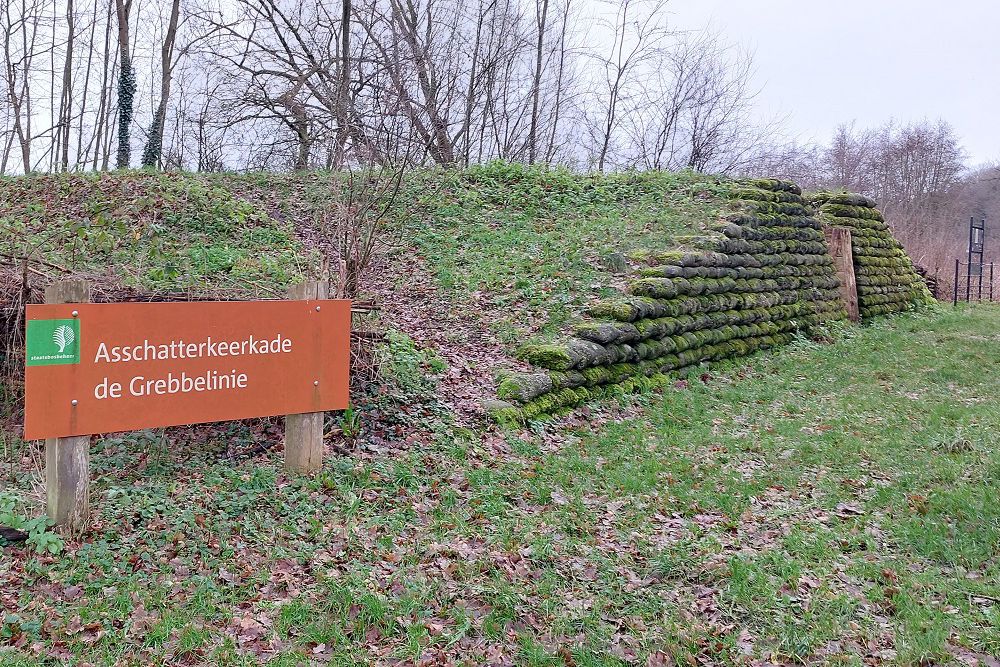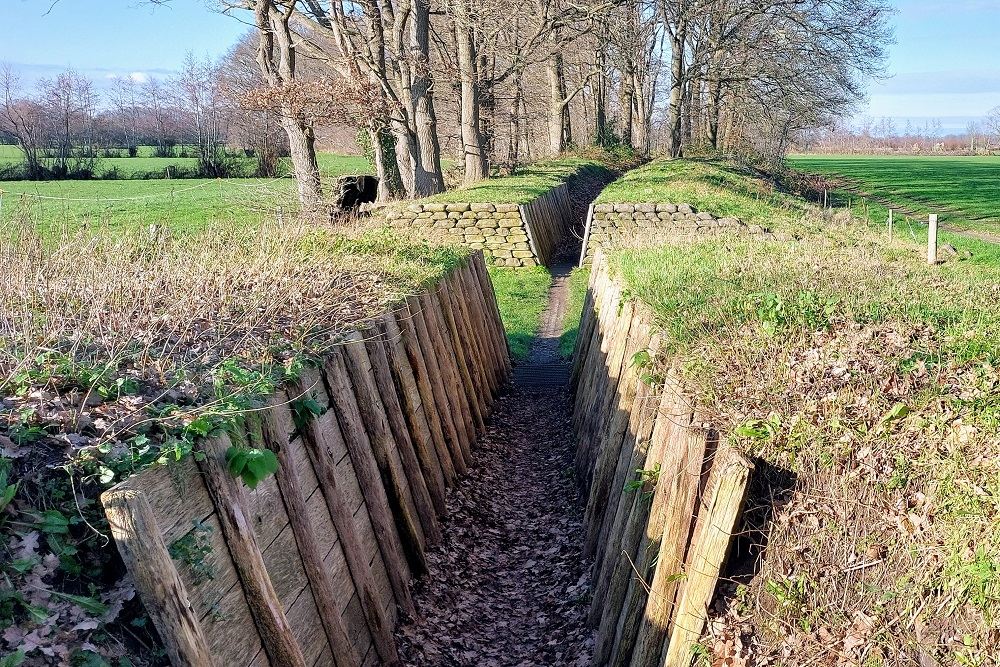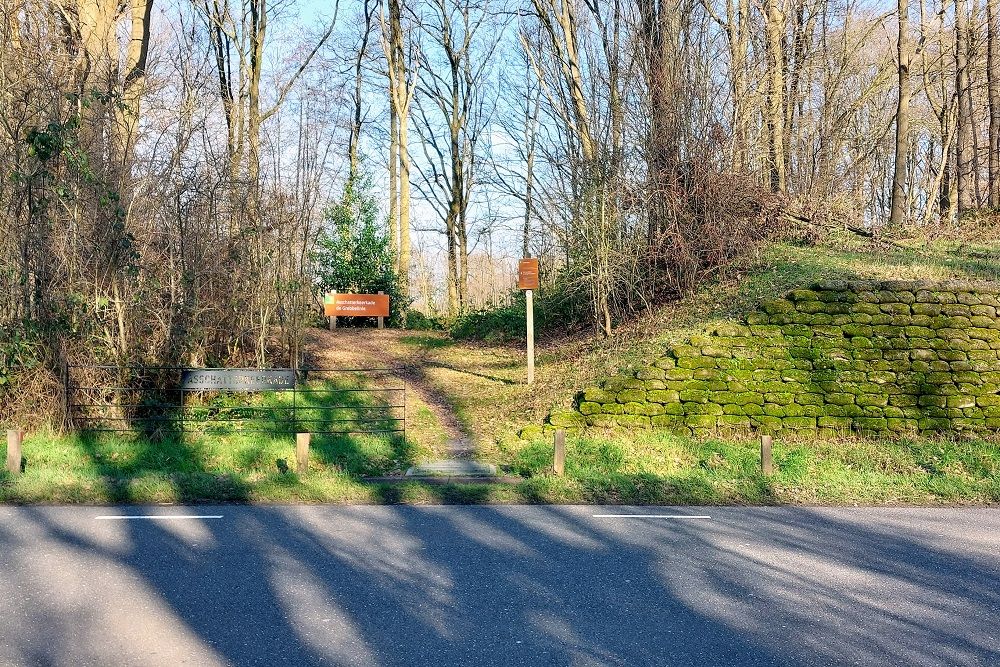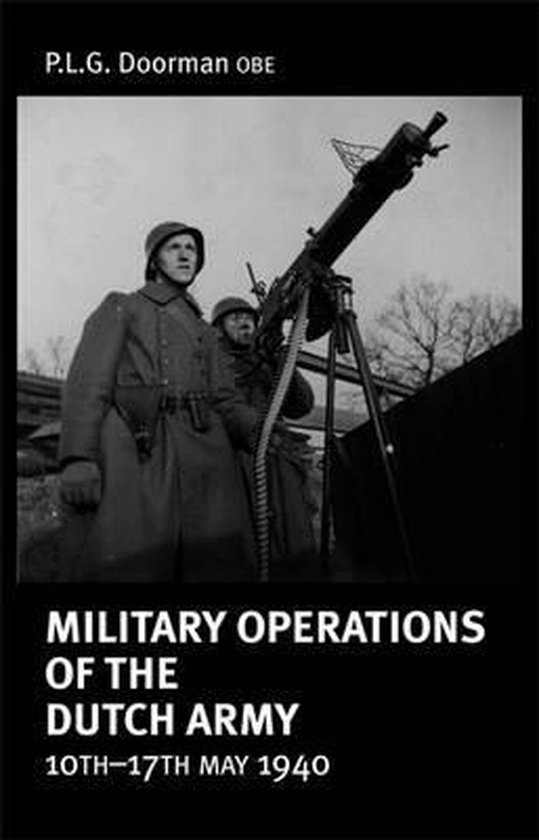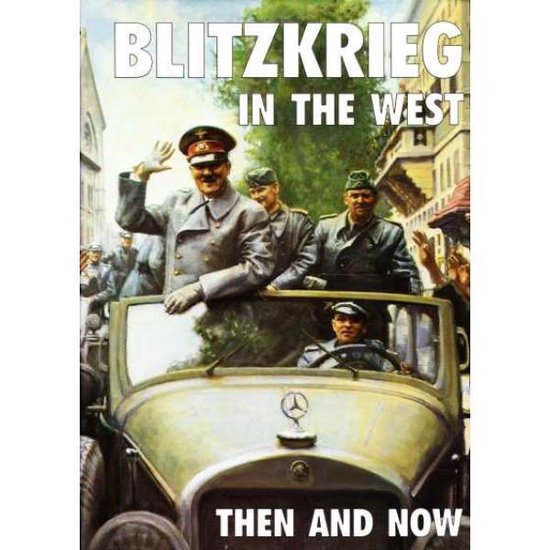Grebbe Line - Preliminary Work Asschatterkeerkade
The Asschatterkeerkade was built in 1745. Extensive reconnaissance and leveling preceded it. The best place turned out to be a cover sand ridge near the hamlet of Asschat. As a result, this more or less natural watershed could be incorporated into the inundation system. The quay was given a crown width of approximately 3 meters and was at 4.90 m + AP. This meant that the quay was about 1.5 meters higher than the surrounding land, which was under about 50 cm of water to the south of the quay during an inundation.
The Grebbe line was formed in 1940 by positions in the front line and the stop line. The latter was intended to stop any enemy that had penetrated and to throw it back beyond the front line. Outposts were also set up in various vulnerable places. In many cases these were warning outposts. After the enemy had been reported in the forecourt, the garrison was allowed to retreat slowly to the front line. With Asschat it was different.
The soldiers in the preliminary work were told that they had to defend themselves stubbornly and the entire quay was set up to offer resistance. Nowhere else in the Grebbelinie were casemates built on a retaining quay, apart from one example on the Roffelaarskade. With these casemates, the Asschatterweg could be closed and flanking fire could be delivered on the site south of the quay. Minefields closed off the northern part, while a number of casemates also had a field of fire to the north.
Penetrated opponents could be stopped midway by a light machine gun in an enlarged porcupine (S7 casemate). Tanks would be kept out with an anti-tank barrage, supported by the inundations on either side. The quay itself provided space for a communication trench, with shelters and positions for riflemen.
Do you have more information about this location? Inform us!
Source
- Text: Grebbelinie.nl
- Photos: Peter Schipper (1, 4, 5), Arjo Eijgelsheim (2, 3)
Related books
Nearby
Museum
- Pantherstellung - Bunker R010-P "Museum Bunker Grebbelinie" - Leusden
- Museum Flehite - Amersfoort
- National Monument Camp Amersfoort - Leusden
Point of interest
- Castle Stoutenburg - Stoutenburg (Leusden)
- Lower Cadre School WA - Leusden
- Rosary Camp Amersfoort - Leusden
Monument
- Memorial Pierre Brisdoux - Leusden
- Memorial Execution 27 April 1945 - Leusden
- War Memorial Roman Catholic Cemetery St. Joseph Leusden - Leusden
Cemetery
- Dutch War Grave Roman Catholic Cemetery St. Joseph Leusden - Leusden
- Grave Civilian Casualty General Cemetery Hoevelaken - Hoevelaken
- Dutch War Graves Roman Catholic Cemetery Amersfoort - Amersfoort
Remembrance Stone
- Memorial Stone Randenbroekerweg 77 - Amersfoort
- Memorial Stone Snoeckgensheuvel 55 - Amersfoort
- Memorial Stones Snoeckgensheuvel 54 - Amersfoort
Fortification
- Pantherstellung - Bunker R008-P - Leusden
- Grebbe Line - Asschatterkade - Tank Barrier - Leusden
- Grebbe Line - S3 Casemate GL049 - Leusden
